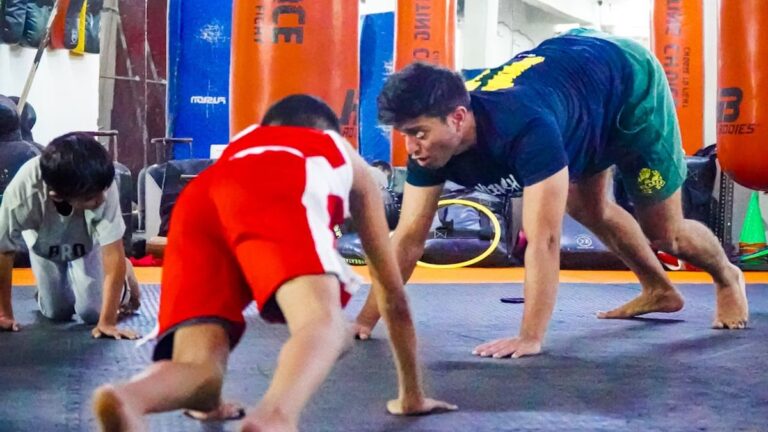Embracing Movement: The Rising Trend of Mindful Fitness Practices
In a world dominated by deadlines and digital distractions, it’s no surprise that a growing number of individuals are seeking solace in mindful fitness practices. Gone are the days when fitness was solely about the number of reps or the pounds lifted; today, it’s about connecting the mind and body in a harmonious dance of movement. This evolution in how we perceive fitness is not just a trend, but rather a profound shift in lifestyle that many are embracing with open arms (and sometimes, open mats).
The Essence of Mindful Fitness
At its core, mindful fitness intertwines physical exercise with mindful awareness. It’s about being present in the moment, paying attention to your body, your breath, and the sensations that arise as you move. Instead of merely grinding through a workout, practitioners focus on the experience of movement itself. I remember my first yoga class—there I was, awkwardly twisting and turning, but somewhere amidst the bending and stretching, I found a surprising tranquility. The instructor’s soothing voice encouraged us to breathe deeply, to let go of the chaos outside, and suddenly, my mind wasn’t racing with thoughts about deadlines or grocery lists. It was just… me and my mat.
A Brief History of Mindful Fitness
Mindfulness, as a practice, has its roots deeply embedded in ancient traditions. Buddhism, for instance, emphasizes awareness and presence. Yet, the modern fitness movement has only recently begun to tap into these age-old practices. In the late 20th century, figures like Jon Kabat-Zinn brought mindfulness into the mainstream, paving the way for a more holistic approach to health. Fast forward a few decades, and here we are, witnessing a surge in practices like yoga, Pilates, Tai Chi, and even dance that champion both movement and mindfulness.
The Benefits of Mindful Fitness Practices
So, why should one embrace this mindful approach to fitness? Well, the benefits are as diverse as the practices themselves. Here are some of the most notable advantages:
- Increased Awareness: Engaging in mindful practices enhances body awareness, allowing individuals to better understand their physical limits and capabilities.
- Stress Reduction: Mindful fitness can lower cortisol levels, leading to reduced stress and anxiety. (I mean, who wouldn’t want a little less stress in their lives?)
- Improved Flexibility and Strength: Many of these practices promote a greater range of motion and functional strength, which are essential for everyday activities.
- Enhanced Mental Clarity: The focus required in mindful movement can lead to improved cognitive function and clarity of thought.
- Community Connection: Many mindful fitness classes foster a sense of community, providing social support and camaraderie among participants.
Popular Mindful Fitness Practices
As the mindful fitness trend blossoms, various practices are gaining traction. Each offers its unique flavor of mindfulness and movement. Let’s delve into a few of the most popular:
Yoga
Ah, yoga. The quintessential mindful fitness practice that has transcended cultures and continents. With its roots in ancient India, yoga combines physical postures, breathing techniques, and meditation. Classes vary from the gentle flow of Hatha to the more intense Ashtanga, appealing to a broad audience. Studies suggest that regular practitioners can experience lower levels of anxiety and improved mood. (I sometimes joke that yoga is like a warm hug for your mind and body.)
Pilates
Founded by Joseph Pilates in the early 20th century, Pilates focuses on core strength, flexibility, and body awareness. While often thought of as a workout for dancers, it has become a staple for those seeking mindful movement. The emphasis on controlled movements encourages practitioners to connect with their bodies in a different way. As someone who has tried Pilates (and let’s just say, it was a humbling experience), I can attest to the importance of that mind-body connection.
Tai Chi
Often described as “meditation in motion,” Tai Chi is a graceful form of martial arts that involves slow, deliberate movements paired with deep breathing. Originating in China, it’s known for its health benefits, particularly in improving balance and reducing stress. Many older adults have adopted Tai Chi as a gentle way to stay active, but it’s increasingly appealing to younger generations seeking mindfulness.
Dance
Who says fitness has to be serious? Dance, in its myriad forms—be it Zumba, ballet, or hip-hop—can also serve as a mindful practice. The joy of movement, combined with music and rhythm, allows individuals to express themselves while staying fit. I remember attending a Zumba class and realizing halfway through that I had forgotten about the world outside. It was liberating!
How to Incorporate Mindfulness into Your Fitness Routine
For those intrigued by this trend, integrating mindfulness into your existing fitness routine doesn’t require a complete overhaul. Here are some practical tips:
Start Small
Begin with simple breathing exercises before or after your workouts. This could mean taking a few deep breaths to center yourself or engaging in a quick body scan to check in with how you feel.
Focus on Your Movements
During workouts, pay attention to how your body moves. Notice the sensations, the rhythm of your breath, and the strength in your muscles. This can transform a mundane workout into a meditative experience.
Limit Distractions
Try to minimize distractions during your workouts. Put away your phone, turn off the TV, and create an environment conducive to focus. (Trust me, your workout will thank you for it.)
Join a Class
Look for local classes that emphasize mindful practices. Sometimes, just being in a group can enhance the experience and provide motivation.
The Science Behind Mindful Fitness
While anecdotal evidence is compelling, scientific research also supports the benefits of mindful fitness practices. Numerous studies have shown that mindfulness can lead to improved physical health outcomes. For instance, a study published in the “Journal of Clinical Psychology” found that individuals who practiced mindfulness reported lower levels of anxiety and depression. Other studies suggest that mindfulness can enhance athletic performance, improve recovery times, and even boost immune function.
Moreover, a meta-analysis in the “Health Psychology Review” highlighted the positive correlation between mindfulness and physical activity. Participants who engaged in mindful practices were more likely to report higher levels of physical activity and a more positive attitude towards exercise.
Challenges and Misconceptions
Another common misconception is that you must be flexible or fit to practice yoga or Pilates. That couldn’t be further from the truth. These practices are inclusive and adaptable to all levels. I once saw a class where participants ranged from seasoned yogis to absolute beginners, and everyone found their own rhythm.
Mindful Fitness and Mental Health
In our fast-paced world, mental health issues are more prevalent than ever. Mindful fitness practices can serve as a powerful tool for mental well-being. Engaging in these practices promotes self-compassion, reduces rumination, and fosters a greater sense of presence. It’s like giving your mind a little vacation from the chaos.
Moreover, many fitness studios are now integrating mental health awareness into their programs. They offer workshops that combine fitness with discussions on mental health, creating a safe space for individuals to share their struggles. This holistic approach not only promotes physical health but mental resilience as well.
Looking Ahead: The Future of Mindful Fitness
As we progress further into the 21st century, the future of mindful fitness looks promising. With an increasing body of research supporting its benefits, more fitness centers are likely to embrace this philosophy. Virtual classes, especially post-pandemic, have made mindful practices more accessible than ever. You can now flow through a yoga class in your living room or join a global Pilates community—all while still wearing your pajamas (not that I would know…).
Additionally, technology is stepping into the mindful fitness arena. Apps that guide users through meditation, breathwork, or even mindful workouts are becoming staples on smartphones. These digital platforms allow users to practice mindfulness at their convenience, further encouraging a culture of self-care and well-being.
Final Thoughts
Embracing mindful fitness is not just about adopting a trendy workout; it’s about nurturing a lifestyle that values the connection between the mind and body. It’s an invitation to slow down, to breathe, and to appreciate the journey of movement without the pressure of perfection. As more individuals recognize the importance of mental well-being alongside physical health, mindful fitness will continue to flourish.
So, whether you’re a seasoned yogi or a curious newcomer, there’s a place for you in this mindful movement. And who knows? You might just find that the next time you step onto your mat (or dance floor), you’ll discover not just a workout, but a pathway to a more fulfilling life.













